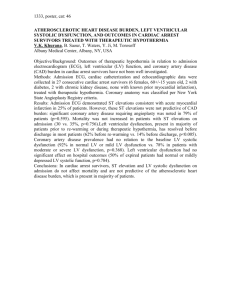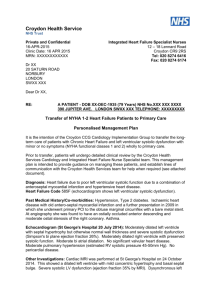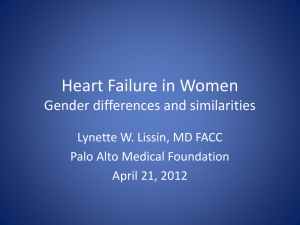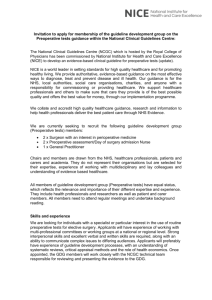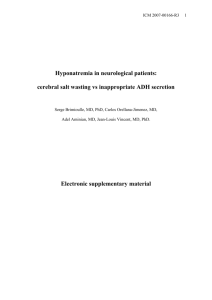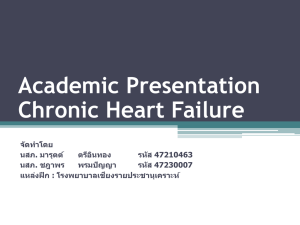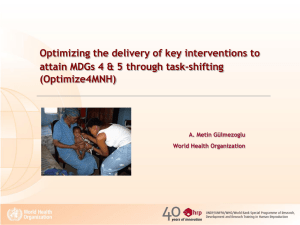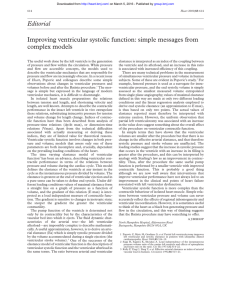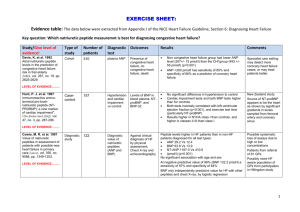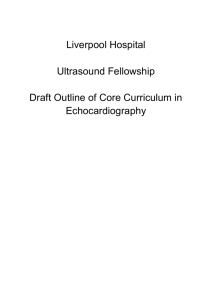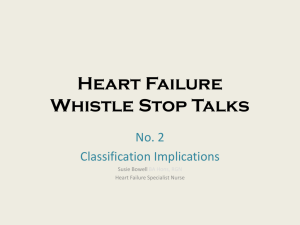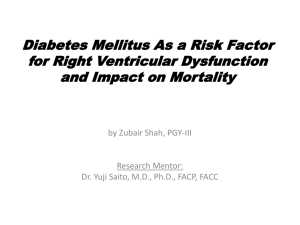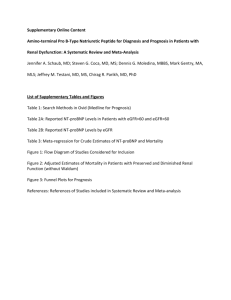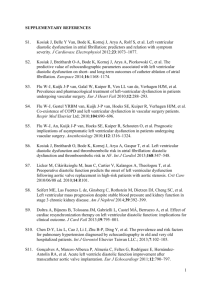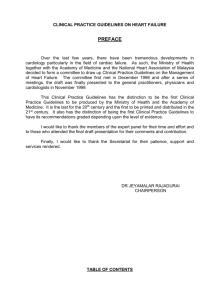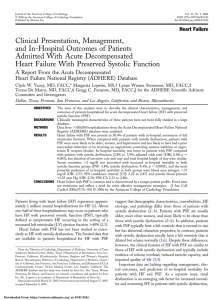Management of Chronic Heart Failure in Adults: Synopsis of the
advertisement
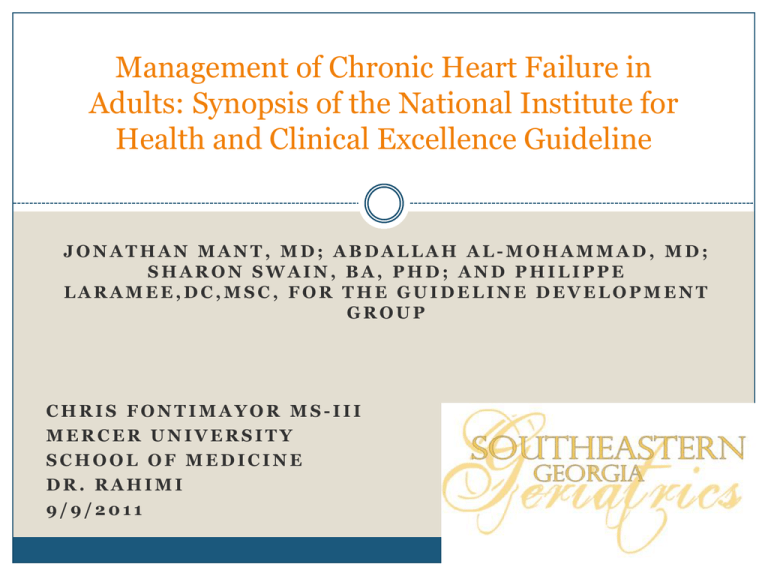
Management of Chronic Heart Failure in Adults: Synopsis of the National Institute for Health and Clinical Excellence Guideline JONATHAN MANT, MD; ABDALLAH AL-MOHAMMAD, MD; SHARON SWAIN, BA, PHD; AND PHILIPPE LARAMEE,DC,MSC, FOR THE GUIDELINE DEVELOPMENT GROUP CHRIS FONTIMAYOR MS-III MERCER UNIVERSITY SCHOOL OF MEDICINE DR. RAHIMI 9/9/2011 Heart Failure (HF) A common clinical syndrome representing the end- stage of a number of different cardiac diseases Result of any structural or functional cardiac disorder that impairs the ability of the ventricle to fill with or eject blood Two types Systolic Dysfunction Diastolic Dysfunction Heart Failure Symptoms – dyspnea, orthopnea, paroxysmal nocturnal dyspnea, nocturnal cough, confusion and memory loss in advanced stages, diaphoresis and cool extremities at rest New York Heart Association (NYHA) Classification Class I – symptoms only with vigorous activities Class II – symptoms with moderate exertion Class III – symptoms with normal daily activities Class IV – symptoms at rest National Institute for Health and Clinical Excellence (NICE) Develops clinical practice guidelines for the National Health Service of England and Wales First guideline on HF in 2003 Target population: Non-pregnant adults with symptoms of chronic HF Exclusion: Patients with acute HF or acute exacerbations of chronic HF Updated every 3 years Literature searches for new evidence, warnings from licensing agencies , and major changes in costs Actively seek out the views of health care professionals and patients Guideline Development Process Guideline development group (GDG)– general practitioners, specialist nurses, a consultant physician, consultant cardiologists, and 2 members representing patients and caregivers Clinical question Literature review Evidence grading High Quality Evidence for Pharmacologic Therapy ACE inhibitors and ß-blockers reduce morbidity and increase survival in patients with left ventricular systolic dysfunction No difference exists between selective ß-blockers (ie metoprolol) and nonselective ß-blockers (ie carvedilol) on the combined end point of mortality and hospitalization Combination therapy of ARBs and ACE inhibitors increases risk of hyperkalemia Adding ARB to ACE inhibitor and ß-blocker reduces the mortality and hospitalization caused by HF Invasive Therapy Recommendations Patients who are at any stage of HF with left ventricular systolic dysfunction should be considered for an implantable cardioverter-defibrillator (ICD) Criteria Sustained ventricular tachycardia or non-sustained ventricular tachycardia that is inducible on electrophysiology testing if the left ventricular ejection fraction (LVEF) is less than 35% QRS of duration of 120 ms or longer if the LVEF is less than 30% Rehabilitation Moderate quality evidence shows that exercise rehab reduces hospital admissions for HF and increases long-term quality of life GDG recommends supervised group exercise programs with psychological and educational components Monitoring Patients With HF Moderate quality evidence Therapy guided by serum natriuretic peptide levels results in a reduction of hospitalizations due to HF Therapy guided by serum natriuretic peptide levels reduces mortality in persons younger than 75 Cost effective analysis demonstrated that serial serum natriuretic peptide monitoring was cost effective when used by specialists Significant heterogeneity of evidence for the use of telemonitoring in decreasing hospitalizations GDG has no recommendation for telemonitoring New Evidence Since the Implementation of the 2010 NICE guideline EMPHASIS-HF Study (Epleronone in Mild Patients Hospitalization and Survival Study in Heart Failure) Significant reductions in hospitalization and mortality when epleronone therapy is started in patients hospitalized during the preceding 6 months or with persistent moderate elevation of serum natriuretic peptide levels (BNP≥250 ng/L) SHIƒT (Systolic Heart Failure Treatment with the Iƒ Inhibitor Ivabradine Trial) Ivabradine, Iƒ channel blocker in SA node, significantly reduces unplanned hospitalization and mortality in patients with HF due to left ventricular systolic dysfunction whose HR remains higher than 70bpm Discussion NICE guidelines are broadly consistent with other international guidelines (ESC and AHA) Benefits Earlier diagnosis Better management Decreased morbidity and mortality Cost-effective Level of Evidence

